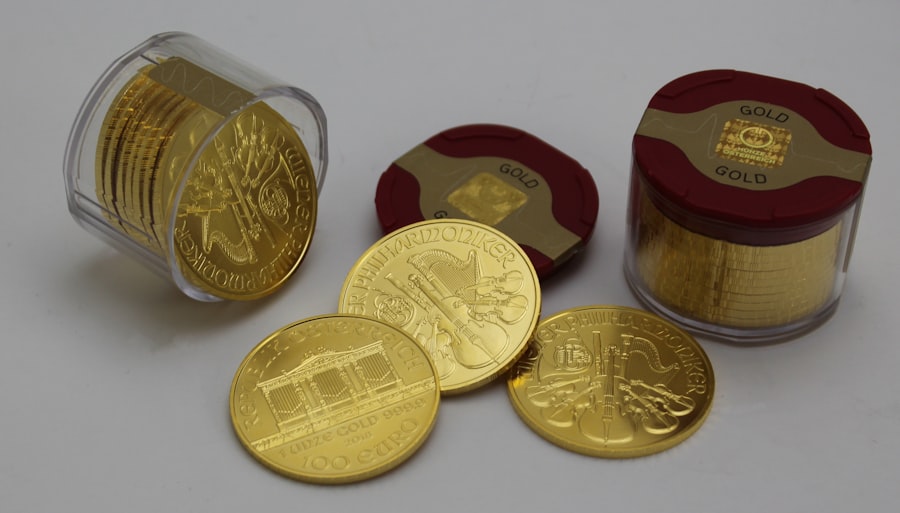A Gold Individual Retirement Account (IRA) is a specialized type of retirement account that allows investors to hold physical gold and other precious metals as part of their retirement savings. Unlike traditional IRAs, which typically consist of stocks, bonds, and mutual funds, Gold IRAs provide a unique opportunity to diversify one’s portfolio with tangible assets. The Internal Revenue Service (IRS) has specific regulations governing the types of metals that can be included in a Gold IRA, which typically include gold, silver, platinum, and palladium.
These metals must meet certain purity standards to qualify for tax-advantaged status. Setting up a Gold IRA involves several steps, including selecting a custodian who specializes in precious metals, funding the account, and choosing the specific types of gold or other metals to invest in. The custodian plays a crucial role in managing the account and ensuring compliance with IRS regulations.
Investors can choose to roll over funds from an existing retirement account into a Gold IRA or make new contributions, subject to annual contribution limits. This flexibility makes Gold IRAs an appealing option for those looking to enhance their retirement savings strategy.
Key Takeaways
- Gold IRAs allow investors to hold physical gold in a tax-advantaged retirement account.
- Investors are turning to Gold IRAs as a hedge against inflation and economic uncertainty.
- Setting up a Gold IRA involves choosing a custodian, funding the account, and purchasing approved gold bullion or coins.
- The benefits of Gold IRAs include portfolio diversification, potential for higher returns, and protection against currency devaluation.
- Potential risks of Gold IRAs include price volatility, storage and insurance costs, and the potential for fraud or theft.
Why Investors are Turning to Gold IRAs
In recent years, there has been a noticeable shift among investors toward Gold IRAs, driven by a variety of factors. One primary reason is the growing concern over economic instability and inflation. As central banks around the world continue to print money and implement low-interest-rate policies, many investors fear that the value of fiat currencies may decline.
Gold has historically been viewed as a safe haven asset during times of economic uncertainty, leading individuals to seek out Gold IRAs as a hedge against potential financial crises. Additionally, the volatility of stock markets has prompted investors to look for alternative investment vehicles that can provide stability. The price of gold tends to move inversely to stock market performance; when equities decline, gold often appreciates in value.
This inverse relationship can help mitigate risks associated with traditional investments, making Gold IRAs an attractive option for those looking to balance their portfolios. Furthermore, the allure of owning physical gold—an asset that has intrinsic value—adds to its appeal as a long-term investment strategy.
How to Set Up a Gold IRA

Establishing a Gold IRA requires careful planning and execution. The first step is to select a reputable custodian who specializes in precious metals. It is essential to conduct thorough research on potential custodians, examining their fees, customer service reputation, and experience in handling Gold IRAs.
Once a custodian is chosen, the investor must complete the necessary paperwork to open the account. This process typically involves providing personal information, selecting beneficiaries, and agreeing to the terms and conditions set forth by the custodian. After the account is established, investors can fund their Gold IRA through various means.
One common method is rolling over funds from an existing retirement account, such as a 401(k) or traditional IRThis rollover process must adhere to IRS guidelines to avoid tax penalties. Alternatively, investors can make direct contributions to their Gold IRA, subject to annual contribution limits. Once the account is funded, investors can begin purchasing eligible precious metals through their custodian.
It is crucial to ensure that all purchases comply with IRS regulations regarding purity and storage requirements.
Understanding the Benefits of Gold IRAs
| Benefits of Gold IRAs | Description |
|---|---|
| Diversification | Gold IRAs provide a way to diversify investment portfolios and reduce overall risk. |
| Hedge against inflation | Gold has historically been a hedge against inflation, helping to protect savings and investments. |
| Store of value | Gold is considered a reliable store of value, maintaining its worth over time. |
| Portfolio protection | Gold IRAs can act as a safeguard during economic downturns and market volatility. |
| Tax advantages | Gold IRAs offer potential tax benefits, such as tax-deferred growth and tax-free withdrawals in retirement. |
Gold IRAs offer several advantages that make them an appealing choice for retirement savings. One of the most significant benefits is diversification. By including physical gold in their retirement portfolios, investors can reduce their overall risk exposure.
Gold often behaves differently than stocks and bonds; thus, it can provide a buffer against market volatility. This diversification can be particularly beneficial during economic downturns when traditional assets may underperform. Another key benefit of Gold IRAs is the potential for long-term appreciation.
Historically, gold has demonstrated a tendency to increase in value over time, especially during periods of inflation or economic uncertainty. This characteristic makes it an attractive option for investors seeking to preserve their wealth over the long haul. Additionally, Gold IRAs offer tax advantages similar to traditional IRAs; contributions may be tax-deductible, and investment gains can grow tax-deferred until withdrawal during retirement.
Potential Risks and Downsides of Gold IRAs
While Gold IRAs present numerous benefits, they are not without risks and downsides that investors should consider before committing their funds. One significant risk is the price volatility associated with gold itself. Although gold has historically been viewed as a stable asset, its price can fluctuate significantly based on market conditions, geopolitical events, and changes in investor sentiment.
This volatility can lead to potential losses if investors are not prepared for short-term price swings. Another downside is the costs associated with setting up and maintaining a Gold IRInvestors may face various fees, including setup fees, storage fees for holding physical gold, and transaction fees when buying or selling metals. These costs can eat into investment returns over time and should be carefully evaluated before establishing a Gold IRAdditionally, the requirement for physical storage means that investors must ensure their gold is securely stored in an IRS-approved facility, which adds another layer of complexity to managing this type of account.
Comparing Gold IRAs to Traditional IRAs

When evaluating investment options for retirement savings, it is essential to compare Gold IRAs with traditional IRAs. Traditional IRAs primarily consist of paper assets such as stocks and bonds, which are subject to market fluctuations and economic conditions. In contrast, Gold IRAs allow investors to hold physical assets that have intrinsic value and are often viewed as a hedge against inflation and economic instability.
One notable difference between these two types of accounts is how they respond to market conditions. Traditional IRAs may experience significant losses during market downturns, while gold often retains its value or even appreciates during such times. This characteristic makes Gold IRAs an attractive option for risk-averse investors seeking stability in their retirement portfolios.
However, traditional IRAs may offer greater liquidity since paper assets can be easily bought and sold on exchanges without the need for physical storage.
Tips for Choosing a Gold IRA Custodian
Selecting the right custodian for a Gold IRA is crucial for ensuring a smooth investment experience. Investors should prioritize custodians with extensive experience in managing precious metal accounts and a solid reputation within the industry. Researching customer reviews and testimonials can provide valuable insights into the custodian’s reliability and service quality.
Additionally, it is essential to understand the fee structure associated with different custodians. Some custodians may charge higher fees for storage or transaction services than others, which can impact overall investment returns. Transparency regarding fees is vital; therefore, potential investors should request detailed information about all costs involved before making a decision.
Furthermore, custodians should be able to provide clear guidance on IRS regulations regarding precious metals and assist clients in maintaining compliance.
The Future of Gold IRAs: What to Expect
The future of Gold IRAs appears promising as more investors recognize the importance of diversifying their retirement portfolios with tangible assets. Economic uncertainties and inflationary pressures are likely to continue driving interest in gold as a safe haven investment. As global markets become increasingly volatile due to geopolitical tensions and economic shifts, many individuals may turn to Gold IRAs as a means of protecting their wealth.
Moreover, advancements in technology may further enhance the accessibility and management of Gold IRAs. Digital platforms that facilitate buying and selling precious metals could streamline transactions and make it easier for investors to manage their accounts remotely. As awareness grows about the benefits of including gold in retirement planning, it is expected that more financial advisors will incorporate Gold IRAs into their recommendations for clients seeking long-term financial security.
In conclusion, while Gold IRAs present unique opportunities for diversification and wealth preservation in retirement portfolios, they also come with inherent risks and costs that must be carefully considered by potential investors. As economic conditions evolve and investor preferences shift toward tangible assets, Gold IRAs are likely to remain a relevant option in the landscape of retirement planning.
If you are interested in diversifying your investment portfolio beyond traditional assets like gold, you may want to consider exploring the world of cryptocurrency. A recent article on deciphering cryptocurrency risks and rewards provides valuable insights into this emerging market. Understanding the potential risks and rewards of investing in cryptocurrencies can help you make informed decisions about incorporating them into your investment strategy alongside gold IRAs.
